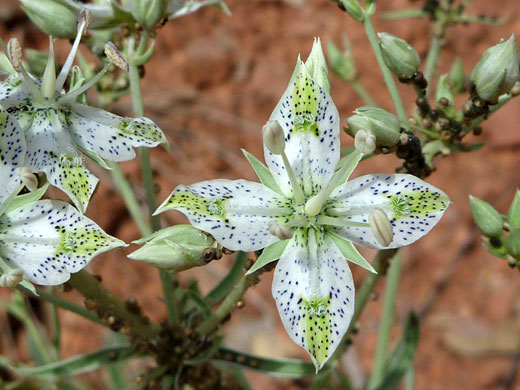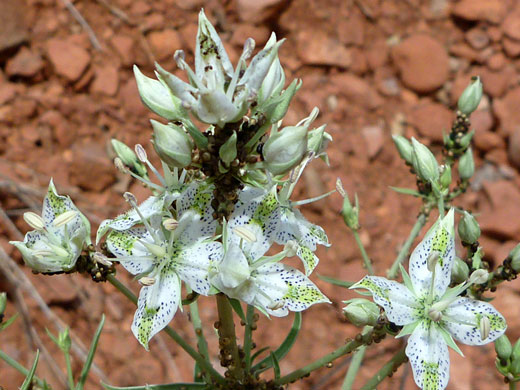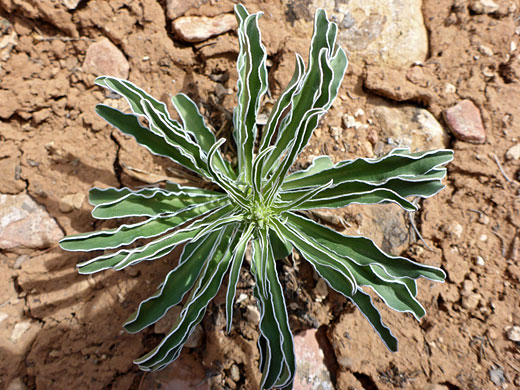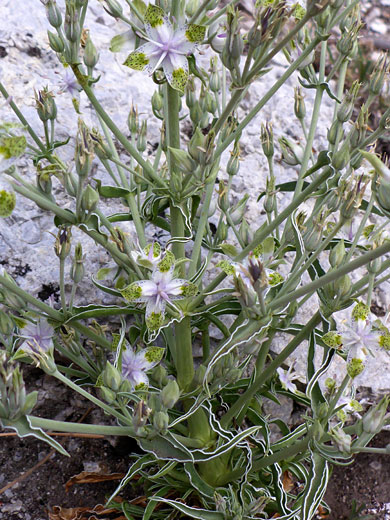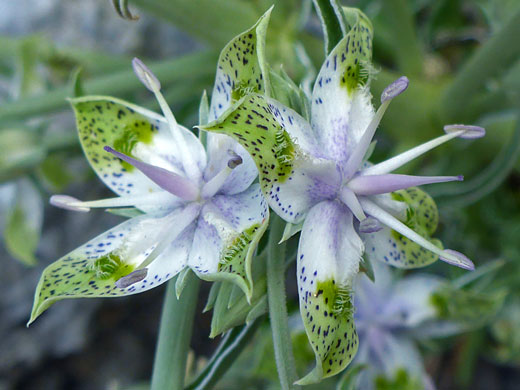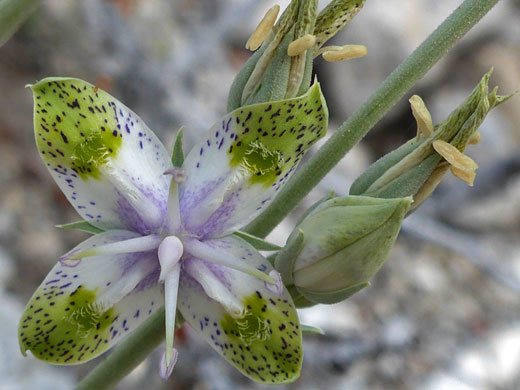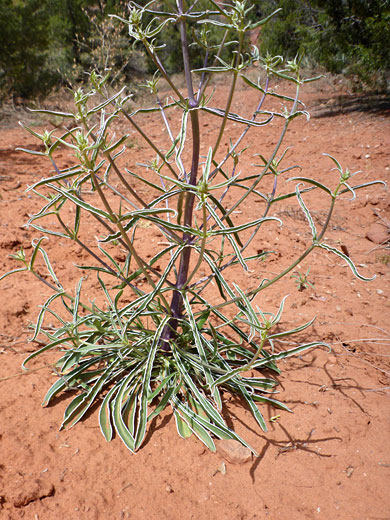Common name:
Desert elkweed
Family:
Scientific name:
Frasera albomarginata
Synonym:
Swertia albomarginata
Main flower color:
Range:
East California, eastwards to the Four Corners area
Height:
Between 1 and 2 feet
Habitat:
Open, arid areas; woodland, hillsides, grassland; 4,500 to 7,000 feet
Leaves:
Linear to lanceolate, up to 3.5 inches long, tapering to a point, with white margins
Season:
April to July
Frasera albomarginata is quite noticeable even when not in bloom, since the light green leaves have a wide white band along their edges, and the margins are somewhat upcurved. Leaves grow densely, in a rosette around the base and in whorls (or opposite pairs) along the stems. A plant may have just one stem, or several.
Flowers are produced in short, branched clusters growing from the upper leaf nodes, and they have a distinctive, unusual structure. The four petals are mostly white, but with a green patch towards the top, a symmetric pattern of small purple dots, and a lengthwise, white, fringed nectar gland, two-lobed (and green) towards the tip. Underneath are four shorter, narrow, light green sepals, displaced by 45 degrees, and so visible from above. In the same vertical plane as the sepals are four angled filaments topped by large cream-colored anthers, with a slender, conical style at the center. The bases of the filaments are fringed. Petals tips are pointed.
Flowers are produced in short, branched clusters growing from the upper leaf nodes, and they have a distinctive, unusual structure. The four petals are mostly white, but with a green patch towards the top, a symmetric pattern of small purple dots, and a lengthwise, white, fringed nectar gland, two-lobed (and green) towards the tip. Underneath are four shorter, narrow, light green sepals, displaced by 45 degrees, and so visible from above. In the same vertical plane as the sepals are four angled filaments topped by large cream-colored anthers, with a slender, conical style at the center. The bases of the filaments are fringed. Petals tips are pointed.
All Contents © Copyright The American Southwest | Comments and Questions | Contribute | Site Map


